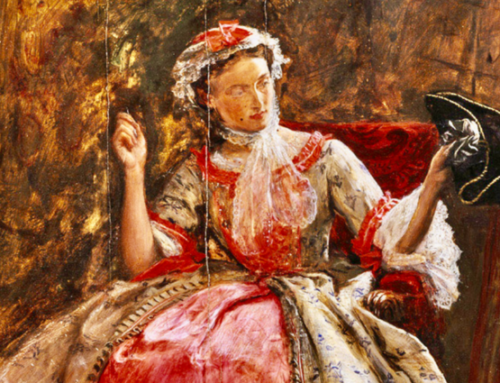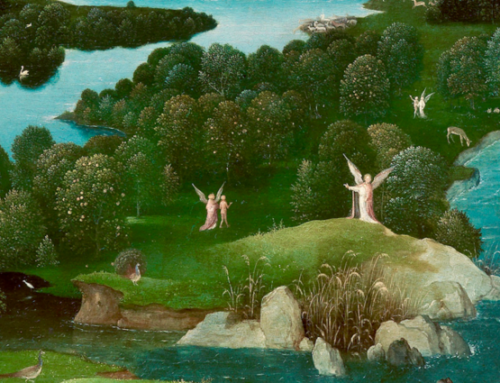Throughout his political career, Abraham Lincoln connected the maintenance of freedom with the preservation of the free West. If the American West fell, so would American liberty. Richard W. Etulain’s “Abraham Lincoln: A Western Legacy” seeks to show more explicitly Lincoln’s relationship with the West.
Abraham Lincoln: A Western Legacy by Richard W. Etulain (198 pages, South Dakota Historical Society Press, 2020)
 In a speech made in Illinois in 1856, Abraham Lincoln spoke to Republican voters about the state of the Union. He touched on the major political issues of the day. The Kansas-Nebraska Act brought the state of slavery and freedom in U.S. territories to the forefront of political discussions in congressional election cycles. Lincoln—a partisan of the very young Republican Party—used every opportunity to call attention to slaveholding South’s attempts to expand slavery where it never before existed. Lincoln rhetorically painted a picture of a free West for his listeners. “Can we,” he asked his audience, “mindful of the blessings of liberty which the early men of Illinois left to us, refuse a like privilege to the men who seek to plant Freedom’s banner on our Western outposts?” The crowd—certainly to Lincoln’s delight—shouted their answers in a resounding “No!” Should he and his fellow Illinoisans “not stand by our neighbors who seek to better their conditions in Kansas and Nebraska?” The crowd enthusiastically echoed their previous answer. Finally, he asked if “we as Christian men, and strong and free ourselves, wield the sledge or hold the iron which is to manacle anew an already oppressed race?” The Illinoisans bellowed that they would not. Throughout his career political career, Lincoln connected the maintenance of freedom with the preservation of the free West. If the American West fell, so would American liberty.
In a speech made in Illinois in 1856, Abraham Lincoln spoke to Republican voters about the state of the Union. He touched on the major political issues of the day. The Kansas-Nebraska Act brought the state of slavery and freedom in U.S. territories to the forefront of political discussions in congressional election cycles. Lincoln—a partisan of the very young Republican Party—used every opportunity to call attention to slaveholding South’s attempts to expand slavery where it never before existed. Lincoln rhetorically painted a picture of a free West for his listeners. “Can we,” he asked his audience, “mindful of the blessings of liberty which the early men of Illinois left to us, refuse a like privilege to the men who seek to plant Freedom’s banner on our Western outposts?” The crowd—certainly to Lincoln’s delight—shouted their answers in a resounding “No!” Should he and his fellow Illinoisans “not stand by our neighbors who seek to better their conditions in Kansas and Nebraska?” The crowd enthusiastically echoed their previous answer. Finally, he asked if “we as Christian men, and strong and free ourselves, wield the sledge or hold the iron which is to manacle anew an already oppressed race?” The Illinoisans bellowed that they would not. Throughout his career political career, Lincoln connected the maintenance of freedom with the preservation of the free West. If the American West fell, so would American liberty.
Lincoln’s identification with the American West has always been heavily inferred. He championed the West throughout his public life. The Civil War and the absence of southern representatives in the federal Congress allowed Republicans to pass the Morrill Act in 1862 and a number of other acts that helped people and commercialized the American Far West. Richard W. Etulain’s Abraham Lincoln: A Western Legacy seeks to show more explicitly Lincoln’s relationship with the West. His goals are modest: He seeks to give examples of Lincoln’s Western-focused legislation and policies while he was president, to understand how Lincoln was memorialized and how that pertained to the West, and to explain Lincoln’s inclusion on Gutzon Borglum’s monument of four presidents at Mt. Rushmore in South Dakota.
Fifty pages of Prof. Etulain’s work are devoted to Lincoln’s early life and his entre into electoral politics. He always claimed to be a man of the West and he was the first president not born in one of the original thirteen states of the Union. More importantly, he was the first one raised in the frontier states of what became the modern Midwest. Even Andrew Jackson, who earned his political reputation by giving voice to the frontier farmer, spent his boyhood and early adult years in the Carolina Piedmont. Lincoln grew up in Indiana, then still a wilderness, and made his political name in Illinois.
If Illinois did not seem to have any substantive connection to most twenty-first-century Americans, Kansas and Nebraska certainly did and it was the question of slavery in those two territories that catapulted Lincoln onto the national political stage. His debates with Stephen Douglas in 1858 largely turned on the question of slavery. Douglas pursued his theory of popular sovereignty. The people of a territory, he argued, had every right to decide for themselves whether slavery should be legal. Lincoln rejected popular sovereignty and argued that slavery could only be legal in southern jurisdictions where it previously existed. Slavery’s expansion was incompatible, he believed, with liberty and republican values. Although he lost to Douglas in 1858, his speeches helped raise his stature in the new anti-slavery Republican Party. Founded in Michigan and Wisconsin as an anti-slavery party in the 1850s, Republicans absorbed former Whigs like Lincoln. By 1860, the party’s nominee seemed poised to win the presidency, provided that conservatives in the Western states deemed the party’s nominee too radical. Lincoln proved to be the most Western-friendly candidate—with the possible exception of Missouri’s Edward Bates—in the relatively crowded Republican field in 1860. The party chose him instead of front-runner William H. Seward of New York. His victory in 1860 represented not only the ascendency of the anti-slavery North over the South, but the West over the slaveholding magnates of Carolina and Virginia. Throughout his political career Lincoln believed that the United States’ republican experiment hinged on the preservation of the West—untainted by slavery—as a place where white settlers could go to escape poverty and enjoy the blessings of the Jeffersonian Empire of Liberty.
Preserving and perpetuating the empire of liberty remained the primary focus of Lincoln’s life, and it is that focus that captures the paradox of his political life so well. Was Lincoln conservative? And did his vision for the American West create a conservative order? These questions are still argued over by historians and political scientists. What seems clear is that at a fundamental level Lincoln allowed a capitalistic social order shorn of chattel slavery and fenced by the long-held understanding of Whig social norms to flourish in the West. Lincoln did not recreate a perfect Christian society in the West and that region’s libertarian streak was apparent any time settlers and the federal government clashed on policies. But the Lincolnian vision for the West did not create a licentious libertarian order either.
After the assassination of Lincoln in April 1865, westerners memorialized him along with the rest of the Union’s population. They had good reason too. The Republican Party promulgated laws such as the Homestead Act and the Morrill Act that made the West available to common American settlers. Rich men no longer held a monopoly on available or arable land, and the promise of cheap acreage and political stability drew hundreds of thousands of easterners into new western states in the years that followed the Civil War. Settlement brought institutions of American civilization like primary schools, civic organizations, and state universities. Lincoln’s reputation remained important to settlers and to broader American society between 1865 and 1900, but the West itself changed tremendously in the same era. Lincoln’s dream of the West reserved for the average American yeoman fell by the wayside as corporate power made its influence felt. Railroads especially drove national policy and settlement patterns throughout the 1870s and 1880s. As the steam engine drove further into the west, control of territory become an imperative. Control of territory meant that Native Americans became not merely a quaint anachronism to be tolerated or helped, but an obstacle to American progress that needed to be removed, violently if necessary. The Indian Wars that culminated in the massacre at Wounded Knee on the Pine Ridge Reservation in South Dakota were more a rejection of Lincoln’s vision for the West rather than a consequence of it.
Lincolnian memory in South Dakota owes its place to the person of Gutzon Borglum rather than a specific affection by South Dakotans for the sixteenth president. In the 1920s Doane Robinson, a prominent South Dakota booster, hoped to increase tourism through the state by a variety of means. One of his ideas involved monuments on a gigantic scale similar to the one on Stone Mountain, Georgia. He contacted Peter Norbeck, US Senator from South Dakota and one of the state’s best politicians. Norbeck made the beautification of South Dakota a political priority and Robinson’s idea seemed similar to his own hopes for his state. They made the fateful choice to select Gutzon Borglum to carve a monument into South Dakota’s Black Hills.
The carver’s biography was in many ways a testament to the variety of social experiences in the American West. Borlgum hailed from a family of polygamous Mormons and lived in and out of the United States during his youth. The sculptor’s difficult personality and controversies over the monument’s funding and form became a story unto itself. He was a political reactionary, affiliated with the KKK, and enthusiastically supported racialized politics of the early twentieth century. He was, however, devoted to the memory of Abraham Lincoln. Borlgum insisted on his inclusion on the monument. In the years that followed, Borlgum spent time at the carving site and taking tours of Europe to raise funds. The schedule took a toll on his health and Borlgum died in 1941. His son eventually finished the monument.
Mount Rushmore remains the most famous landmark in South Dakota and is undoubtedly what most people throughout the United States associate with the state. Lincoln’s inclusion on the statue was an important way of tying the Founders and the Great West in the mind of visitors to the statue in the minds of the public at large. Prof. Etulain closes his work by noting that shifting standards of memorialization, especially deconstructionist tendencies in modern colleges and universities, threaten the uniting spirit of monuments like Mount Rushmore. He cautions those who would force Lincoln to conform to early twenty-first-century standards to avoid demanding social or moral perfectionism in the pursuit of some sort of ephemeral retroactive justice. Prof. Etulain’s warning regarding iconoclasm seems increasingly important in an era when radicals want to destroy every aspect of American culture not beholden to certain leftist revolutionary tropes. Thankfully, Lincoln and Mount Rushmore remain popular, and that popularity, one hopes, will prove longer-lasting than the tenure of radicals who would see them destroyed.
The Imaginative Conservative applies the principle of appreciation to the discussion of culture and politics—we approach dialogue with magnanimity rather than with mere civility. Will you help us remain a refreshing oasis in the increasingly contentious arena of modern discourse? Please consider donating now.
The featured image is a photograph of Abraham Lincoln by Matthew Brady, taken in 1864, and is in the public domain, courtesy of Wikimedia Commons.







Prof. Etulain also edits the Concise Lincoln Library for the Southern Illinois University Press. His books on western historiography, biographies, and literary analyses are insightful. While he still taught at the University of New Mexico, he graciously answered my questions about a possible book on Texas novelist Elmer Kelton. Thank you for calling this book to our attention.
Senator Norbeck should have asked himself if, in terms of the beauty of South Dakota, the four presidents’ head were an improvement of what God created. More seriously — perhaps not “more” seriously — the Rushmore monument was an enormous step toward the deification of the presidency, an enormous step away from what Washington did when he refused to be a king.
If anyone would read the 1860 Republican Platform, you will see some flaws of the way Lincoln is often presented. He wanted to tax the South to fund the West and it was the biggest economic revolution.
While Republican Party was founded as opposing slavery, they never offered abolition. Fremont lost on the slavery issue in 1856. The writer mentions the passage of the Tariff which is key. It was a new plank in the 1860 Republican Platform and re-ignited the passions of the Nullification Crisis.
Lincoln, as member of the U.S. House of Representatives, voted in 1848 in favor of a resolution stating opposition to “a war unnecessarily and unconstitutionally begun by the President of the United States.” The war in question was the Mexican-American War (1846-1848), and that war resulted in the most sizable and important addition to U.S. territory.
By that war, we obtained the important port cities of Los Angeles, San Francisco, and San Diego, and also all of California, Utah, Colorado, Nevada, New Mexico, and the present-day Texas south of Corpus Christ and west of Austin (the original State of Texas, as established in the Texas War for Independence in 1835, was really quite small).
Therefore, I propose that Lincoln’s most significant connection to the American West was his rejection, on moral and constitutional grounds, of President Polk’s scheme to annex, by hook or crook, the southern half of what we call “the West.” (and which had been the northern part of the Republic of Mexico).
Lincoln laid out his moral and constitutional case in a speech on the House floor on January 12, 1848. Ulysses S. Grant, who was a military officer in the Mexican War, later condemned the war as grossly immoral in intention and manner. Alexander H. Stephens, who went on to become the vice-president of the Confederacy, also condemned Polk’s war of aggression against Mexico when he was a member of Congress in 1848.
I wonder if Professor Miles Smith IV at Hillsdale College teaches that President Lincoln and President Grant condemned the war that gained the most famous and valuable part of the American West? I know for a fact that Plato’s adage that “Philosophy begins in wonder” is taught at Hillsdale College, and that quote is treasured by many in the Conservative tradition. But I can’t help but revise that quote as follows: The wonder of philosophy is that it can be used to justify and beautify anything.
Like most Conservative-minded persons, I generally hate Nietzsche, but I still find it a lot of practical insight in these lines from Nietzsche:
–“The Will to Truth, which is to tempt us to many a hazardous enterprise, the famous Truthfulness of which all philosophers have hitherto spoken with respect,…WHAT really is this “Will to Truth”?”
–“It has gradually become clear to me what every great philosophy up till now has consisted of—namely, the confession of its originator, and a species of involuntary and unconscious auto-biography; and moreover that the moral (or immoral) purpose in every philosophy has constituted the true vital germ out of which the entire plant has always grown.”
–“Accordingly, I do not believe that an “impulse to knowledge” is the father of philosophy; but that another impulse, here as elsewhere, has only made use of knowledge (and mistaken knowledge!) as an instrument.”
–“But this is an old and everlasting story: what happened in old times with the Stoics still happens today, as soon as ever a philosophy begins to believe in itself. It always creates the world in its own image; it cannot do otherwise; philosophy is this tyrannical impulse itself, the most spiritual Will to Power, the will to “creation of the world,” the will to the causa prima.”
And so, though the Marxists and the Fascists do far greater harm that do the Conservatives, the philosophies of all of these movements are but masks for unconquerable biological drives that control the lives of all biological beings. (I.e., the laws of biology dictate the dynamics of all biological beings, just as the laws of physics dictate the dynamics of inanimate matter, energy, space, and time).
Conservatives always accuse leaders and activists of the Left of expressing phony compassion for the poor and downtrodden as a cynical means for these Left-side leaders and activists to fulfill their secret, voluminous Will to Power through the public offices of the federal government. But doesn’t a closer examination reveal that Conservatives are every bit as Will to Power motivated, even if they often seek to fulfill their Will to Power through private business free enterprise rather than through federal governmental offices and legislation? Are only Leftists born with original sin? When Conservatives speak of “Liberty,” doesn’t that include the liberty of few to economically dominate and control the many? Aren’t we long past the possibility of a Jeffersonian national agrarian economy of small land-owning farmers, tradesmen, and businessmen?
Well, these are the things I think about. I wish I were wrong about all this. I’d like to be proven wrong.
I wish someone had found a way for evolved biological beings like us to transcend our biological beingness. I wish Conservatives had a way to really attain the Kingdom of Heaven.
But ought not the Will to Truth (intellectual honesty) compel us to tell each other the truth about reality, and not advance politically and psychologically useful folklore, legends, and philosophical myths and noble lies as if they accurately describe the foundational reality of our lives?
Wasn’t Socrates a fearless seeker of the truth about reality? Isn’t that what Socrates was killed for—his refusal to compromise the Will to Truth for the sake of loyalty to tribe, race, class, religion, tradition, and nation? Wasn’t Socrates in fact guilty as charged? Must we moderns secretly kill Socrates again and again, while hypocritically valorizing him?